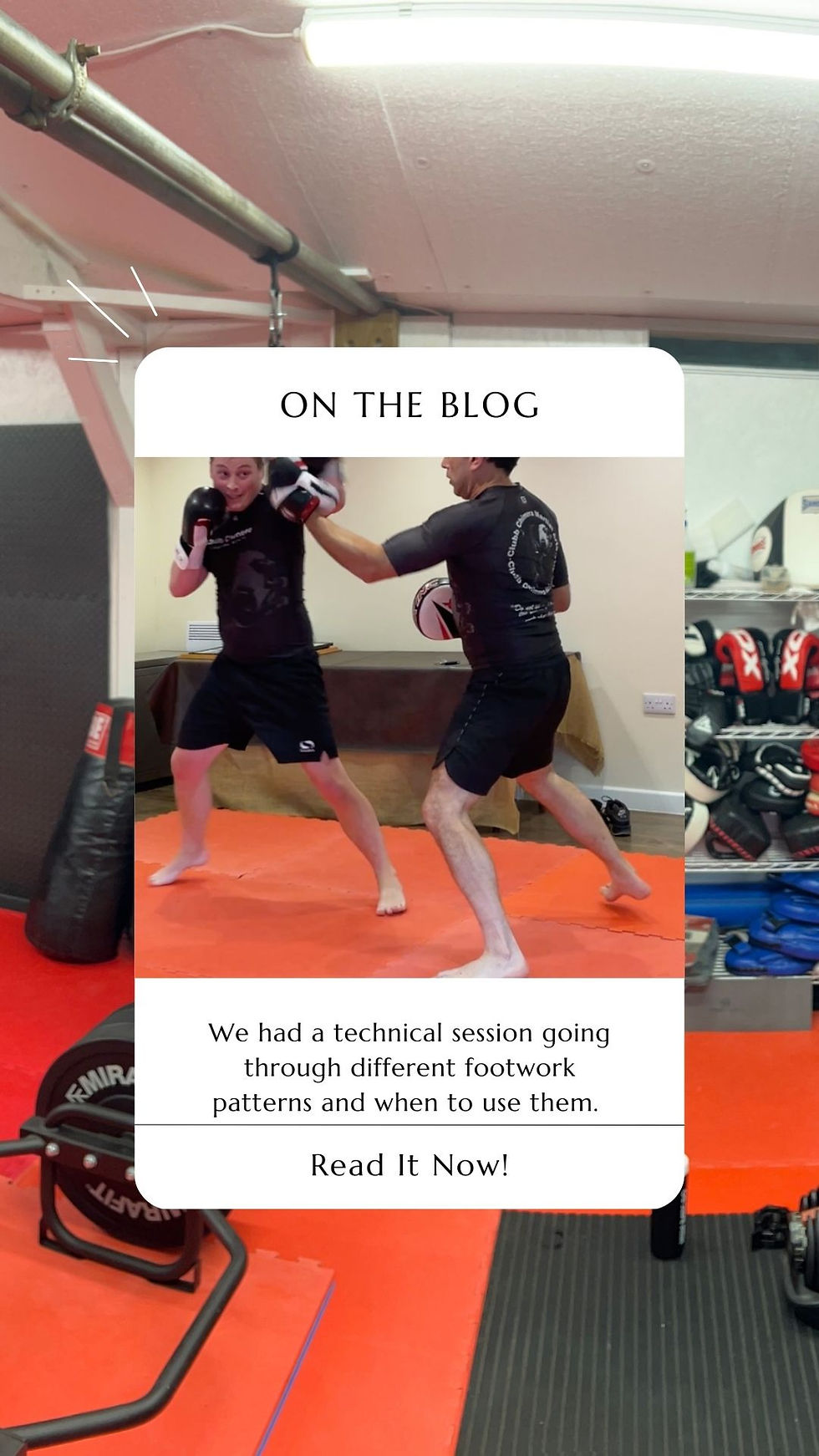Technical Workout (Boxing)
- jamie03066
- Sep 3
- 3 min read

25.09.2025
With this being my couple client's final week before they tie the knot we focused the second hour of their training technical training. Arguably all my training is technical in nature - I believe that live games and constraints-led sparring are the most reliable ways to discover and retain good techniques in practical martial arts - this lesson needed to be at a lower intensity than normal. I am happy to accommodate my client's needs and preferences. My two just needed a light physical workout and to go through their foot-work. In an effort to not myself - it's the same footwork I have been covering over the past couple of weeks with my senior client, my adapted client, my teenage client and my new morning client - I have described my main influences and background for the footwork covered:
Pendulum step - Not to be confused with the isolated forward step and backward step taught early in Boxing, this is an economic low level bounce between usually executed between long and edge of range. The origin of this movement is usually put at the door of the Soviet system. Its rhythmic stepping coordinated with fluid linear punches was developed to work in amateur competitions. Since then it has risen into prominence through the Cuban style and the Ukrainian style. Ukrainian fighters like Vasyl Lomachenko and Oleksandr Usyk use it as a foundational move for attacking and retreating at edge of range, and exploiting angles. Lomachenko couples it with pawing jabs and other sight obstructions to around opponent's guards and strike at a vulnerable position. Usyk uses it more to get inside the jabs of opponents with longer reaches and to capitalise on his southpaw angled position. It is also part of Naoya Inoue's footwork repertoire along with the pop step and skating. Inoue uses these economic yet highly dynamic steps to quickly transition between power stances for attack and bladed stances for baiting.
Pivot step - This is the first sophisticated technique taught after a boxer is confident with their forward backward and linear steeping. The move is usually executed between long and mid-range. It is simply stepping off the attack line to a stronger angled position behind their shoulder. More nuanced fighters use it on the inside too but this is inherently more dangerous and is a very different tactic. Fighters pivot offensively and defensively, either to attack from a stronger position or as a counter attack from a jab.
V-step - Exemplified by the great WIllie Pep and later by his most famous fan in MMA, Dominic Cruz, this step involved switching stance on an angle whilst moving out of the way of an opponent's straight. However, other variations simple include moving in and then stepping out at an angle, creating a V with your feet.
L-step - Sugar Ray Leonard is the first person I think of when it comes to this elusive baiting tactic and movement. Here the fighter steps back before switching feet to move at a 90 degree angle. They then usually return their attack from here. It is a great way to quickly escape being cornered as well as fighting effectively off the back foot.
Shift step - I think of Mike Tyson's drop shift-step here as taught to him in the peek-a-boo style. Here the fighter shifts off on an angle. Much like the pivot step and the V step, it can be an effective counter-attack method by appearing square on to bait before moving off on an angle to counter punch. The key thing to remember here is the shifting from one stance to another on the outside whilst shifting in the same stance on the inside.













Comments